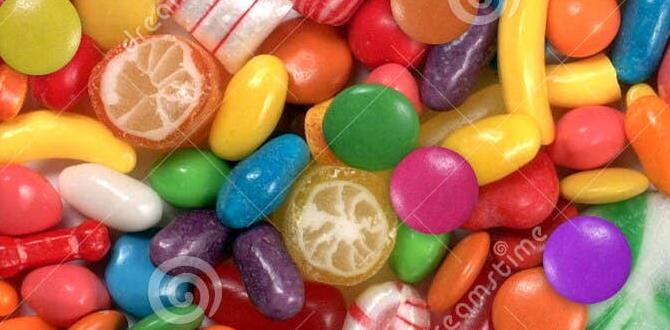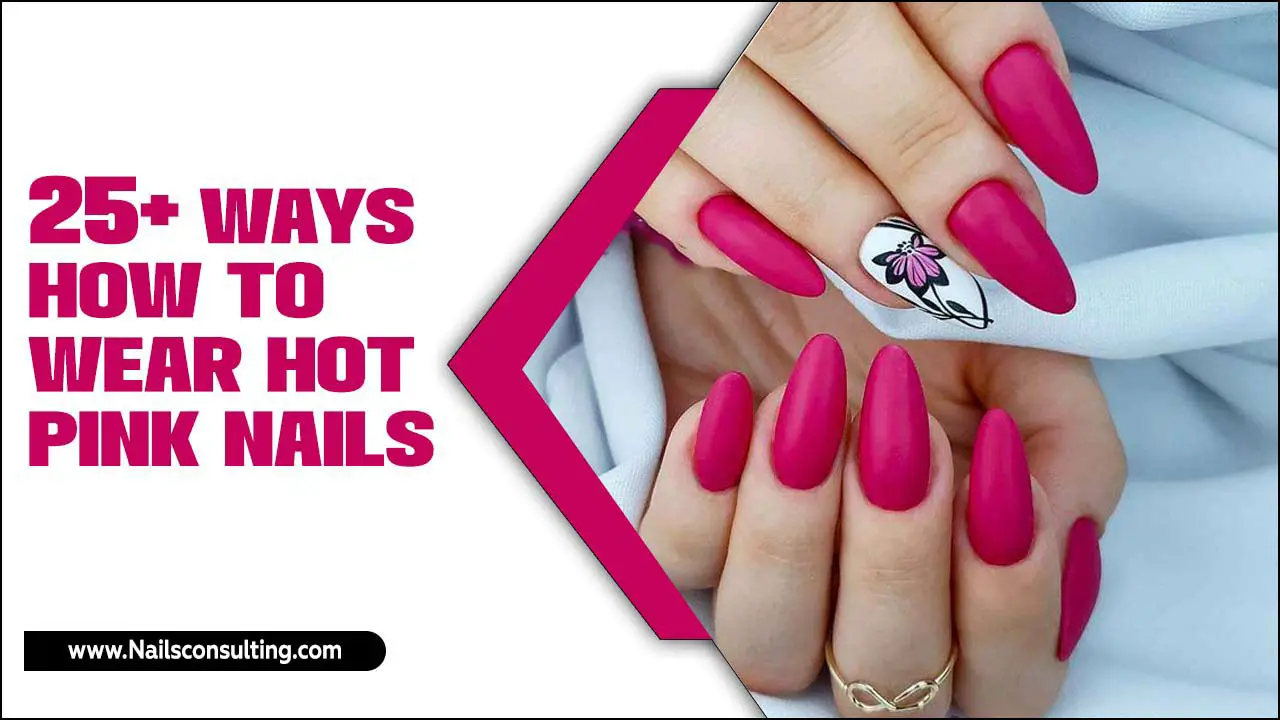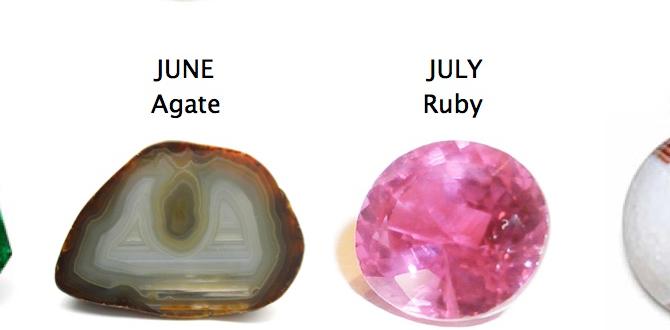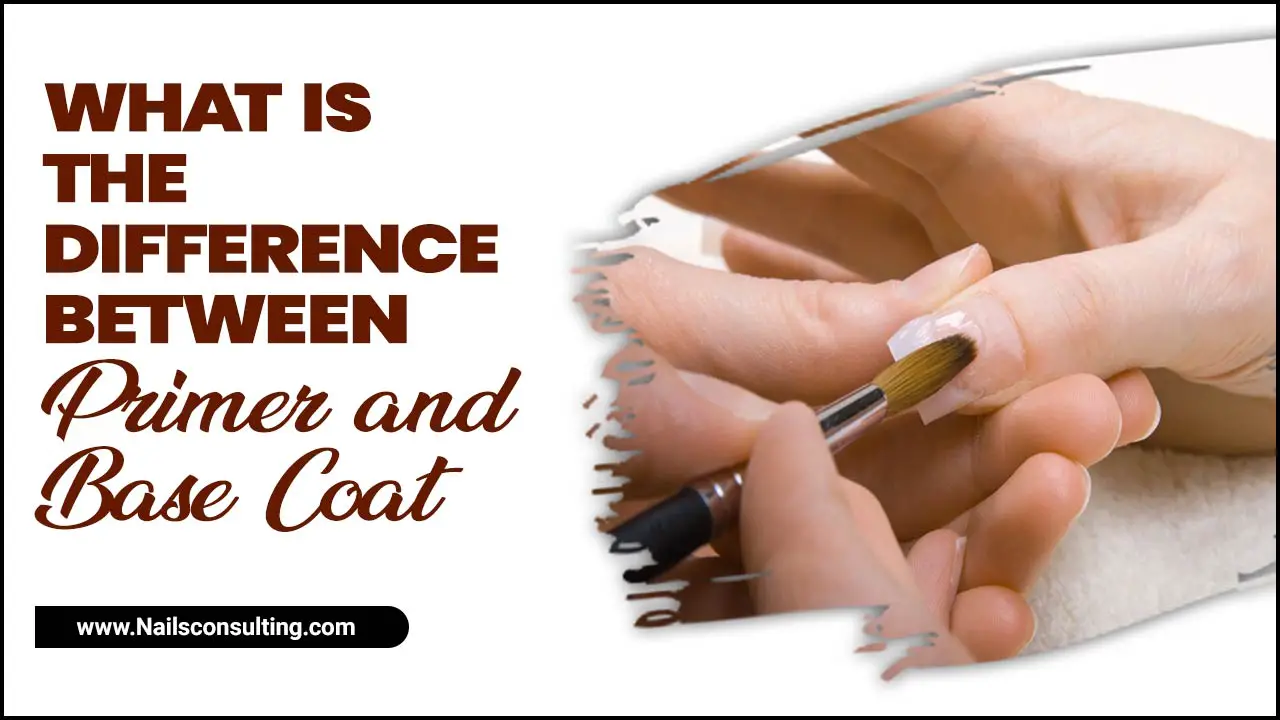What is 3D nail art? Think of it as sculpting tiny masterpieces right on your fingertips! It’s a way to add tangible texture and dimension to your nails, making them pop with unique designs that go beyond flat polish. This guide will walk you through everything you need to know to get started.
Are you mesmerized by those stunning, sculpted nail designs you see online? Do you wonder how those little flowers, bows, or jewels actually stick to nails and look so… real? If flat nail polish feels a little too ordinary for your taste, you’re in the right place! Many of us have admired 3D nail art from afar, thinking it’s too complicated to try ourselves. But guess what? It’s totally achievable, even for beginners. We’re going to break down what 3D nail art is, why it’s so cool, and how you can start creating your own eye-catching designs. Get ready to add a whole new dimension to your manicure game!
What Exactly Is 3D Nail Art?
At its heart, 3D nail art is about creating designs that have a raised, three-dimensional effect. Unlike traditional nail art where designs are painted flat onto the nail surface, 3D nail art involves attaching or building up materials to give the design actual depth. Imagine a tiny sculpted rose climbing your nail, or a delicate pearl perched on your cuticle – that’s the magic of 3D art!
The “3D” aspect means the design isn’t flat. It has height, depth, and physical presence. This can range from subtle textures to bold, sculptural elements that extend beyond the nail surface. It’s a way to transform your nails into miniature canvases for intricate and eye-catching creations.
Why Choose 3D Nail Art?
So, why would you want to add dimensionality to your nails? The reasons are as varied and creative as the art itself:
- Unleash Your Creativity: 3D nail art offers a vastly expanded palette for artistic expression. You’re not just limited to colors; you can play with shapes, textures, and forms.
- Make a Statement: These designs are conversation starters! They’re bold, unique, and show a real commitment to personal style and flair.
- Unique Textures and Effects: Add tactile elements like beads, gems, sculpted acrylics, or even tiny charms for a look you can (carefully!) feel.
- Versatility: From subtle embellishments to dramatic sculptures, 3D nail art can be adapted to any occasion, from everyday chic to glamorous evening wear.
- Express Yourself: Whether you love a delicate floral, a edgy geometric, or a whimsical character, 3D nail art allows for incredibly detailed and personalized designs.
Common Types of 3D Nail Art
Not all 3D nail art is created equal! Different techniques and materials result in diverse looks. Here are some of the most popular ways to achieve that dimensional effect:
1. Embellishments & Charms
This is perhaps the most beginner-friendly way to dive into 3D nail art. It involves applying pre-made decorative elements directly onto the nail.
- Rhinestones and Gems: Tiny crystals, pearls, rhinestones, and other jewels can be strategically placed to create patterns or add sparkle. They’re usually attached with strong nail glue or a thick top coat.
- 3D Charms: These are small, decorative trinkets made from metal, plastic, or resin. Think tiny bows, hearts, fruits, stars, or even miniature food items! They are adhered to the nail with nail glue.
- Studs and Beads: Small metal studs or tiny beads can add a subtle metallic or textured feel to your designs.
Pro Tip: For maximum hold with embellishments, apply them while your top coat is still slightly wet and tacky, or use a dedicated nail glue. For heavier items, a dab of strong nail glue is usually best.
2. Acrylic or Gel Sculpting
This is where things get more artistic and sculptural. Professional nail technicians often use acrylic or gel mediums to build designs directly onto the nail.
- Acrylics: This durable material can be molded and sculpted into various shapes. It’s perfect for creating raised flowers, leaves, bows, or intricate patterns.
- Builder Gels: Similar to acrylics, builder gels can be used to sculpt extensions and 3D art. They offer good strength and can create smooth, polished finishes.
For Beginners: While complex sculpting is best left to professionals, you can experiment with simpler gel or acrylic applications. For instance, you can “dot” and “pull” gel polish to create petal shapes or small textural elements.
3. Decals & Stickers
While many decals are flat, some come with a slight raised texture or can be layered to create a subtle 3D effect. However, the most common 3D stickers are those designed to be slightly puffy or dimensional from the start.
- Puffy Stickers: These are often made of vinyl or similar materials and have a pre-defined shape that gives them a little lift off the nail.
- Layered Nail Art Stickers: Some sticker sets are designed to be layered, allowing you to build up depth and create more complex designs.
4. Hand-Painted Raised Designs
This technique uses specific nail polish formulas or even 3D gel paints to create raised artwork without adding separate embellishments.
- 3D Gel Paints: These are thicker, more viscous gel polishes designed to hold their shape and create textured designs. They are cured under a UV/LED lamp.
- Thick Nail Polish/Texture Paints: Some regular nail polishes are formulated to be thicker, allowing for more defined strokes and a slight raised effect, especially when applied in multiple layers.
Essential Tools and Materials for 3D Nail Art Beginners
Starting with 3D nail art doesn’t require a massive investment. Here’s a breakdown of what you’ll need to get going:
1. Base and Top Coats
These are non-negotiable for any manicure, but especially for 3D art. A good base coat protects your natural nail, and a strong top coat seals your design and adds shine.
- Base Coat: Prevents staining and helps polish adhere better.
- Top Coat: Seals the design, adds shine, and protects embellishments. Consider a “no-wipe” top coat if you plan to adhere gems directly to it.
2. Adhesives
The key to keeping your 3D elements in place!
- Nail Glue: Essential for attaching heavier charms and 3D elements. Look for a reliable, quick-drying formula.
- Clear Nail Polish/Strong Top Coat: Can be used as an adhesive for lighter items like small gems.
3. Application Tools
Precision is key when working with small pieces.
- Tweezers: Fine-tipped tweezers are crucial for picking up and accurately placing small embellishments and charms.
- Dotting Tools: These have a ball end and are perfect for picking up small gems and placing them precisely, or for creating small raised dots with polish.
- Small Brushes: A fine-liner brush or a small detail brush can help you apply glue precisely or even create tiny sculpted elements with gel.
4. The 3D Elements Themselves!
This is the fun part – choosing what to put on your nails!
- Rhinestones, Gems, and Pearls: Available in various sizes, shapes, and colors. You can buy them pre-packaged in little pots or trays.
- 3D Charms: Look for these online or in craft/beauty supply stores. They come in endless designs.
- Other Embellishments: Consider glitter, microbeads, sequins, or even small metallic studs.
- 3D Gel Paints or Thick Nail Polishes: If you want to paint your 3D designs.
5. Nail Polish Remover and Cotton Pads
For cleaning up mistakes and removing polish.
6. Optional: UV/LED Lamp
If you plan to use gel polish or 3D gel paints, a lamp is necessary to cure them.
Step-by-Step Guide: Creating Simple 3D Nail Art (Beginner-Friendly)
Let’s get hands-on! This guide is for creating a simple 3D nail design using embellishments like rhinestones or a small charm. It’s a fantastic starting point.
Step 1: Prepare Your Nails
Just like any manicure, a clean canvas is essential.
- Clean: Wash and thoroughly dry your hands and nails.
- Shape: File your nails to your desired shape.
- Cuticle Care: Gently push back your cuticles.
- Apply Base Coat: Apply one coat of your favorite base coat and let it dry completely.
- Apply Color: Paint your nails with your chosen nail polish color(s). Apply as many coats as needed for full opacity, allowing each to dry thoroughly.
- Apply Top Coat: Apply a thin layer of top coat to your entire nail and let it dry until it’s slightly tacky but not wet. This tackiness can help lighter embellishments adhere. Alternatively, you can apply your top coat after placing your 3D elements for a super smooth finish. We’ll cover both!
Step 2: Prepare Your 3D Elements
Have your chosen embellishments ready and easily accessible.
- Sort: Lay out your rhinestones, gems, or charm on a clean surface.
- Tools Ready: Have your fine-tipped tweezers or a dotting tool ready.
Step 3: Adhere Your 3D Elements
This is where the magic happens!
Option A: Using Tacky Top Coat (Best for light gems, tiny beads)
- Place Element: Using your tweezers or dotting tool, carefully pick up a rhinestone or tiny gem.
- Press Gently: Gently press the embellishment onto the tacky top coat on your nail.
- Position: Wiggle it slightly into the perfect position.
- Repeat: Continue adding more embellishments to create your design.
Option B: Using Nail Glue (Best for heavier charms, larger gems)
- Apply Glue: Place a tiny dot of nail glue either directly onto the nail where you want the element to go, or onto the back of the charm/gem itself. Be sparing – too much glue can create a mess.
- Place Element: Using your tweezers, carefully pick up the charm or gem.
- Affix: Gently press it into the glue on your nail.
- Hold: Hold it in place for a few seconds to ensure it adheres properly.
- Repeat: Add more pieces as needed.
Step 4: Seal Your Design
This step is crucial for longevity.
- Careful Application: If you used the tacky top coat method, you can carefully apply another thin layer of top coat around, but not directly over, the embellishments to help secure them without obscuring their sparkle.
- For Glue Method: If you used nail glue, you can carefully brush a thin layer of top coat around the edges of the charm or gem to seal it. Avoid getting too much top coat directly on top of the element, as it can dull its shine or fill in textured designs.
- Smooth Finish: For a super smooth finish and maximum protection, apply a thicker layer of top coat and carefully brush it over and around your 3D elements, ensuring they are fully encased. This is best done if your 3D elements aren’t too tall or if you want a very “sealed” look.
- Cap the Edges: Always remember to “cap” the free edge of your nail with your top coat to prevent chipping and lifting.
Step 5: Let It Dry Completely
Patience is a virtue! Allow your nails to dry completely, which can take longer with added elements and top coats. Avoid touching anything until you’re sure they’re hard.
Tips for Longer-Lasting 3D Nail Art
You’ve put in the effort – let’s make it last!
- Cleanliness is Key: Ensure nails are completely free of oils and dust before starting.
- Proper Sealing: Don’t skimp on the top coat. Make sure it covers all edges and helps secure your 3D elements.
- Be Gentle: Avoid using your nails for tasks that might snag or pry off your 3D elements (like opening cans, or picking things forcefully).
- Avoid Harsh Chemicals: Prolonged exposure to harsh cleaning products can break down adhesives and damage your design. Wear gloves when doing chores!
- Maintenance: If a gem loosens, a tiny dab of nail glue can often save the day!
When to Seek Professional Help
While DIY 3D nail art is incredibly rewarding, there are times when professional expertise is invaluable.
Acrylic and Gel Sculpting
Creating intricate, permanent 3D structures using acrylic or gel requires significant skill, practice, and specialized tools. Professional nail technicians train extensively in these techniques. If you’re dreaming of elaborate sculpted flowers, bows, or extensions shaped into designs, visiting a salon is the best route.
You can learn more about nail care best practices from institutions like the National Center for Biotechnology Information (NCBI) , which often publishes research and guidelines related to skin and nail health, emphasizing the importance of professional application for certain procedures.
Complex Designs
For extremely detailed or large-scale 3D art that goes beyond simple embellishments, a seasoned nail artist will have the techniques and materials to bring your vision to life flawlessly and safely.
Durability Concerns
If you want a 3D design that’s built to last and can withstand daily wear and tear without compromise, professional application using hard gels or acrylics is often more robust than home-applied glues and lighter embellishments.
Pros and Cons of 3D Nail Art
Like any beauty trend, 3D nail art has its highlights and potential drawbacks. Understanding these can help you decide if it’s the right fit for you.
| Pros | Cons |
|---|---|
| High Visual Impact: Creates unique, eye-catching, and memorable nail designs. | Can Be Prone to Snagging: Raised elements can catch on clothing, hair, or objects. |
| Enhanced Creativity: Offers more options for artistic expression beyond flat painting. | May Require Special Adhesives: For heavier elements, strong nail glue is needed, which can be tricky to apply. |
| Personalization: Allows for extremely detailed and personalized designs. | Can Add Bulk: Some designs might feel cumbersome or add thickness to the nail. |
| Textural Interest: Adds a tactile dimension to manicures. | Potential for Damage: Improper application or removal can damage natural nails. |
| Relatively Easy Entry (with embellishments): Simple application of gems and charms is beginner-friendly. | Removal Can Be Tricky: Requires careful soaking or lifting to avoid damaging the nail. |
| Trend-Forward: Keeps your nails current with popular beauty trends. | Maintenance Required: May need touch-ups or careful handling to maintain perfection. |
Frequently Asked Questions About 3D Nail Art
Q1: Is 3D nail art difficult to do at home?
A: It can range from very easy to quite challenging! Applying pre-made charms and rhinestones is beginner-friendly and requires minimal tools. However, sculpting designs with acrylic or gel takes practice and skill.
Q2: What’s the best adhesive for 3D nail art?
A: For lighter items like small gems, a good quality top coat or clear nail polish can work. For heavier charms or 3D elements, a strong, quick-drying nail glue is best. Ensure you use it sparingly.
Q3: Can I put 3D nail art on artificial nails like gel or acrylic extensions?
A: Absolutely! Artificial nails provide a strong base and often a smooth surface perfect for applying 3D elements. They can even better support more elaborate sculpted designs.
Q4: How do I remove 3D nail art without damaging my nails?
A: For embellished nails, gently try to lift edges with an orange wood stick after soaking your hands in warm, soapy water. For designs using nail glue, acetone-based remover can help dissolve it. Be patient and gentle to avoid peeling or tearing your natural nail.
Q5: Will 3D nail art fall off easily?
A: With proper application and sealing, 3D nail art can last quite a while, often as long as your regular polish or gel manicure. However, the raised elements are more susceptible to snagging and impact than flat designs, so gentle care is needed.
Q6: Can I use regular nail polish to create 3D effects?
A: You can create subtle raised effects by layering thick coats of regular polish to build up small textures or dots. For more pronounced 3D designs, specialized 3D gel paints or acrylics are usually recommended.
Conclusion
See? 3D nail art isn’t as intimidating as it might seem! Whether you choose to adorn your nails with dazzling rhinestones, playful charms, or aspire to sculpt your own tiny masterpieces, there’s a world of creativity waiting for you. By understanding the basics of what 3D nail art is, the common techniques, and the essential tools — especially for beginners — you’re well on your way to transforming your nails into miniature works of art. Start simple, have fun experimenting, and let your personality shine through your fingertips. Happy nailing!




